
How Many Types Of Magic Mushrooms Exist?
There are hundreds, if not thousands, of magic mushroom species, spanning multiple genera. Now, we can't name them all here—it's possible they haven't all yet been discovered—but we can explore some of the most common. Keep reading to find out more.
Magic mushrooms come in all shapes and sizes, with varying potency, compounds, and other distinct features. However, the vast majority of psychedelic mushrooms contain psilocybin, the main hallucinogenic alkaloid responsible for shrooms’ trippy effects.
That being said, certain mushroom species contain compounds that are toxic—some can cause an upset stomach, while others can cause full-on organ failure. This is why it is extremely important for wild mushroom hunters to know exactly what they are doing. However, knowing that there is such a variety out there, it begs the question, just how many types of mushrooms with psychoactive properties are there?
How many types of psychedelic mushrooms are there?
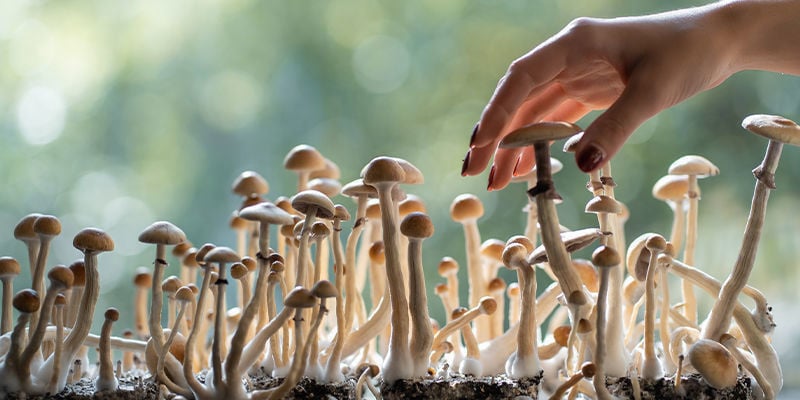
There are hundreds of species of psychedelic mushrooms, and while most contain psilocybin and psilocin, this isn’t the case for all of them. Of the mushrooms that contain the alkaloids psilocybin and psilocin, there are four genera: Psilocybe, Panaeolus, Gymnopilus, and Pluteus—by far the most well-known are the former two.
Aside from these genera, there are also mushrooms that contain muscimol and ibotenic acid. These compounds are found in mushrooms from the Amanita genus, most famously Amanita muscaria, or fly agaric, the classic toadstool with a red cap with white dots. Many species within this genus are dangerous, with Amanita phalloides being one of the most dangerous species of mushroom in the world. So, be warned!
What distinguishes psilocybin mushrooms from other types of mushrooms?
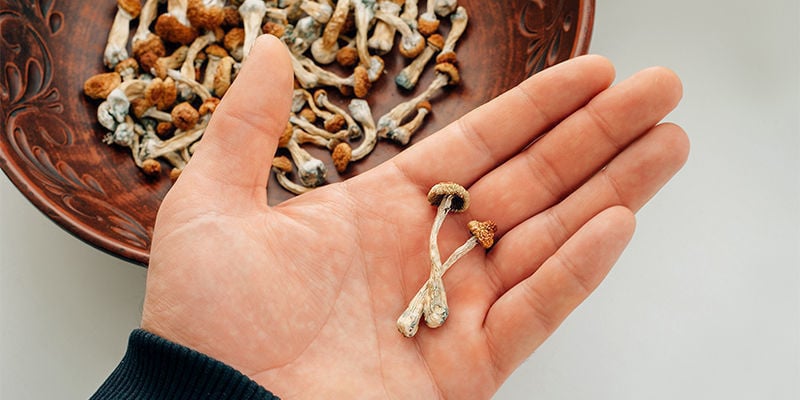
Psilocybin-containing mushrooms are distinguished by just that—the fact that they produce psilocybin (and psilocin). These two compounds are closely related, with psilocybin being a prodrug that converts to psilocin (and back again) under certain conditions. Fresh mushrooms actually contain more psilocin, while dried ones contain more psilocybin, which is then converted into psilocin by stomach acid.
Aside from the presence of these compounds, the diversity among psilocybin-containing mushrooms can be quite vast, and so there is more that distinguishes species and genera from one another than unites them. Still, what most of us are most interested in is their ability to get us high.
4 main magic mushroom genera
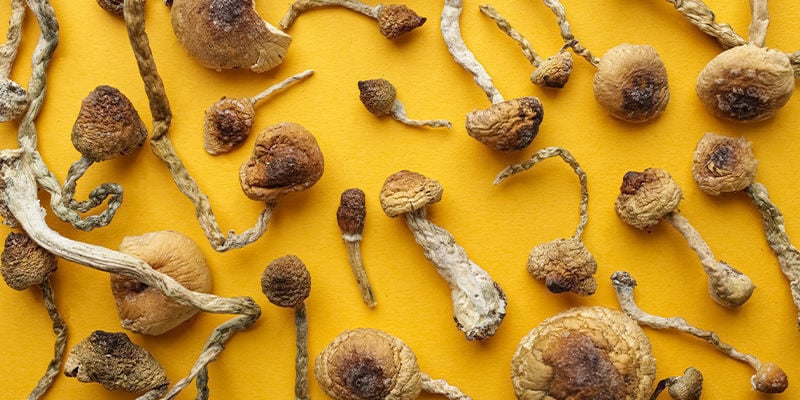
In the following section, we'll go into a little more detail about the four main genera of mushrooms that contain psilocybin-producing species.
Psilocybe
Of all the types of magic mushrooms, it is the Psilocybe genus that is most popular and well-known. This collection of mushrooms boasts a very extensive list, with at least 245 different species calling this genus home. This includes the ever-popular Psilocybe cubensis, with many varieties featured throughout our grow kit catalog. And that simply drives another point home: each of these 245 different species has sub-varieties—adding further to the number.
There are two reasons that this genus is so well-known. First, the species that belong to it grow prolifically and abundantly across the globe. Second, Psilocybe cubensis is by far the easiest species of magic mushroom to artificially cultivate, making it the shroom of choice for most who want to grow at home.
Panaeolus
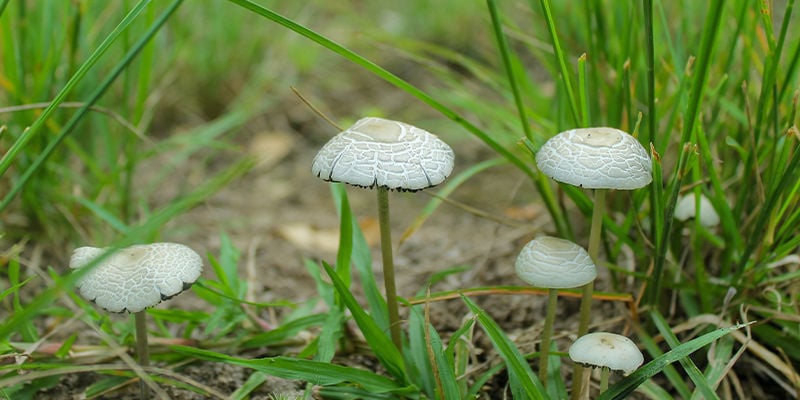
This genus contains some of the strongest magic mushrooms in the world, including Panaeolus cyanascens (more on that below). Commonly, species within this genus have convex caps. However, not all members of this genus contain psilocybin and psilocin, unlike the Psilocybe genus.
- Panaeolus cyanescens (Copelandia)
- Panaeolus cambodginiensis
- Panaeolus tropicalis
Gymnopilus
This genus is common in temperate and subtropical forests in the US and Europe. While many species do contain psilocybin and psilocin, they do so in much smaller concentrations compared to Psilocybe or Panaeolus mushrooms, meaning only avid mycologists tend to go foraging for them. On the whole, they have convex, flat caps and an orange to brown coloration. Common species include:
- Gymnopilus spectabilis
- Gymnopilus aeruginosus
- Gymnopilus luteus
- Gymnopilus viridans
Pluteus
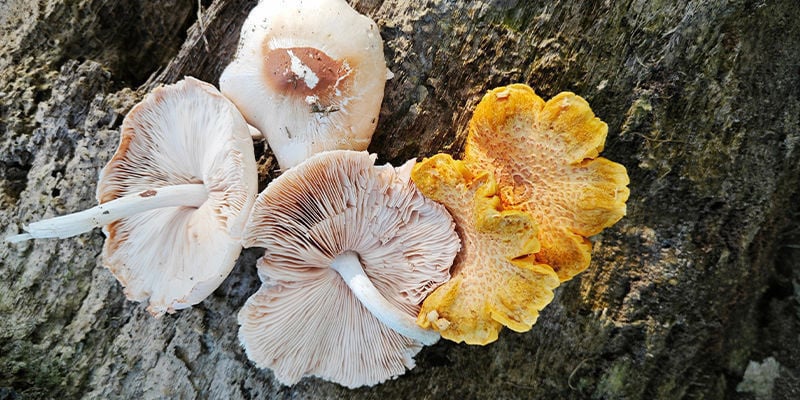
Found in deciduous and mixed forests, Pluteus contains several species that produce small amounts of psilocybin. These mushrooms love nutrients and tend to grow on dead wood or in very rich soil. Psilocybin-containing species include:
- Pluteus salicinus
- Pluteus atricapillus
- Pluteus cyanopus
What are the most common types of magic mushroom?
If you’re into psilocybin, there are certain species of magic mushrooms that you’ll come across time and time again. Some are loved for their strength, others for their ease of cultivation, and others for both reasons! Let’s take a look at some.
Psilocybe cubensis
Psilocybe cubensis is the most widely consumed species of magic mushroom. As they are very easy to cultivate indoors, even by amateurs, strains within this species are the most widely available, year-round and globally. However, there are many, many subspecies or strains that all have their own distinct effects and growing characteristics.
Some are trippier, others are more introspective, and others just yield a lot of fruit. Take a look at the grow kits on our website and you’ll begin to get a sense of the diversity within the cubensis species.
Psilocybe cyanescens
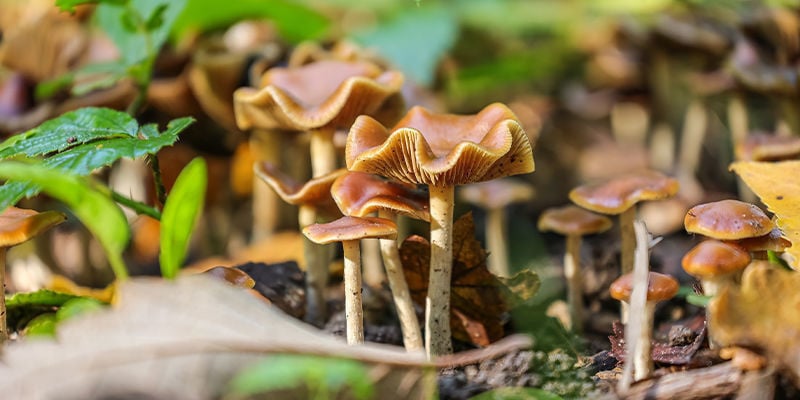
These are the strongest magic mushrooms in the world. Also known as Copelandia or Blue Meanies, these shrooms are a ghostly white color and grow in tropical environments. And though somewhat tough to cultivate, they can actually be grown at home from spores or grow kits.
Not only are these shrooms particularly strong, but the quality of the high is as unusual and ethereal as their appearance.
Psilocybe azurescens
These mushrooms are native to the West Coast of the US, but have been cultivated across the world. Also extremely potent, they are worth trying for those who can safely forage them.
Psilocybe azurescens have broad, light brown caps with a nipple on the top and gray-brown stems. Like most mushrooms, they fruit during the autumn months when it cools off but is wet and mild.
Psilocybe mexicana
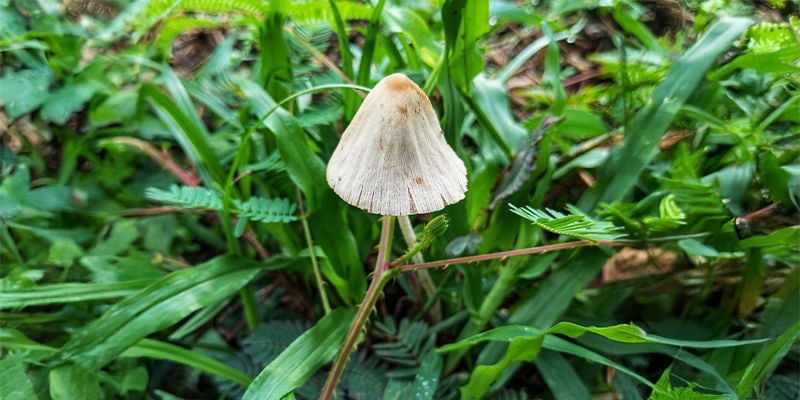
Found only in Mexico, Guatemala, Costa Rica, and El Salvador, these shrooms fruit from May to October and grow in clusters. They have small, brown conical caps and look similar to liberty caps (Psilocybe semilanceata). They prefer wet moss and grasslands within deciduous forests.
Psilocybe semilanceata
The famous liberty cap! These shrooms grow across the world, most commonly in meadows and grasslands across Europe and the US, although they have also been found in Chile, India, Pakistan, Australia, and New Zealand, where they may have been inadvertently introduced.
It is thought that these shrooms, with their distinctive nipple shape, gave us the image of the witch on her broom (often depicted in the same shape as these shrooms) and the witch’s hat with its leaning tip. It is also suspected that “witches” actually collected and used these mushrooms, which were thought to be ungodly!
Amanita muscaria
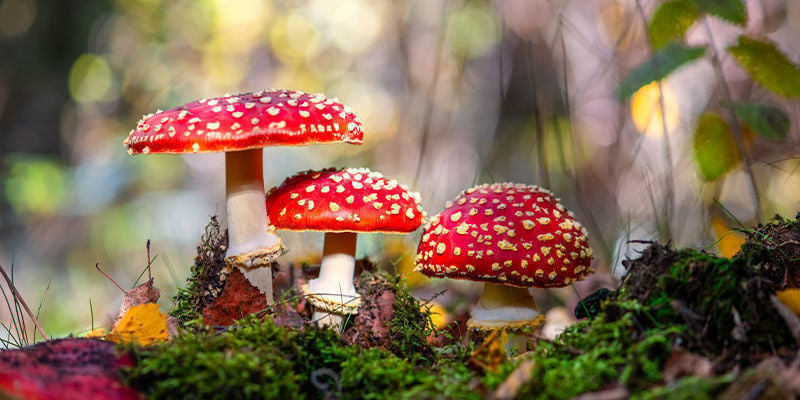
We’ve all seen this mushroom depicted, even if we don’t really know what it is. Amanita muscaria, or fly agaric, is a hallucinogenic mushroom that has long been used by shamanic cultures across the Northern Hemisphere. This mushroom is not strictly psychedelic and has different mechanisms of action to psilocybin-containing shrooms.
There are even reports of Siberian reindeer herders drinking the urine of reindeer who had ingested this mushroom, entering a trance-like state as a result. The urine is believed to contain the psychedelic compounds of the mushroom, while the more toxic compounds are metabolized, making it potentially "safer" to drink.
Do all magic mushrooms grow in the same places?
Not at all—they grow all around the world. However, as they’re fungi, they tend to prefer moist places and times of year, as well as nutrient-rich environments. Though not always the case, many species like to grow on or near herbivore dung.
Exploring the vast kingdom of magic mushrooms
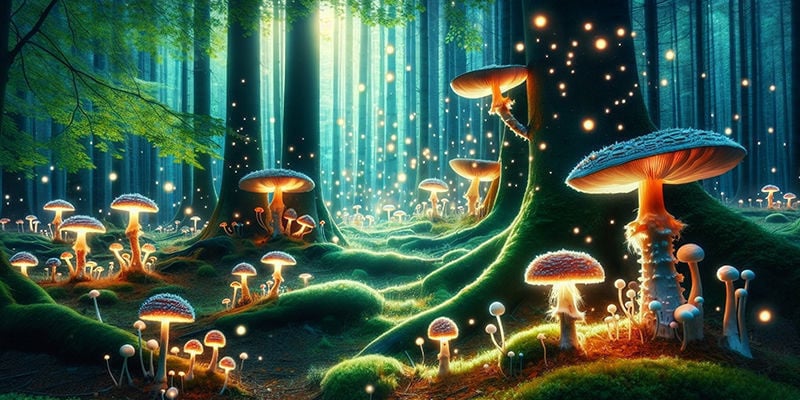
As you can see, there are hundreds of species of hallucinogenic mushrooms out there, and potentially some that are yet to be discovered! While you can go out and forage for the rare, weird, and wonderful, it might be worth identifying some of the more common specimens on this list and trying to find them first. There’s a reason they’re so popular. And, as always, it’s vital you know what you’re picking and ingesting before doing so.
Even if you never take them, it’s comforting to know that nature is so determined to produce hallucinogenic life forms!
-
 5 min
April 7, 2025
Fresh vs dried Magic mushrooms: Which one is better?
Dried magic mushrooms are popular for their long shelf life, lasting indefinitely compared to fresh ones that spoil within days. However, drying alters their potency, flavor, and effects. Read on...
5 min
April 7, 2025
Fresh vs dried Magic mushrooms: Which one is better?
Dried magic mushrooms are popular for their long shelf life, lasting indefinitely compared to fresh ones that spoil within days. However, drying alters their potency, flavor, and effects. Read on...
-
 4 min
December 12, 2024
Do Mushrooms Have Health Benefits?
Mushrooms: they're weird, they're wonderful, and it turns out they're really healthy too! Here we look at the varied health benefits of eating a range of edible mushrooms.
4 min
December 12, 2024
Do Mushrooms Have Health Benefits?
Mushrooms: they're weird, they're wonderful, and it turns out they're really healthy too! Here we look at the varied health benefits of eating a range of edible mushrooms.
-
 7 min
December 5, 2024
Which Mushrooms Are Best To Eat?
Mushrooms are some of Earth's most compelling life forms. In this article, we're focusing on 11 of the healthiest mushrooms to include in your diet. Whether incorporated whole into meals or taken...
7 min
December 5, 2024
Which Mushrooms Are Best To Eat?
Mushrooms are some of Earth's most compelling life forms. In this article, we're focusing on 11 of the healthiest mushrooms to include in your diet. Whether incorporated whole into meals or taken...
-
 4 min
October 13, 2022
Can You Build A Tolerance To Magic Mushrooms?
Did you know that it's possible to build a tolerance to magic mushrooms? Fortunately, it's not long-lasting, meaning your trips will be at their peak once again after a short reset period. Find out...
4 min
October 13, 2022
Can You Build A Tolerance To Magic Mushrooms?
Did you know that it's possible to build a tolerance to magic mushrooms? Fortunately, it's not long-lasting, meaning your trips will be at their peak once again after a short reset period. Find out...





 United States
United States










